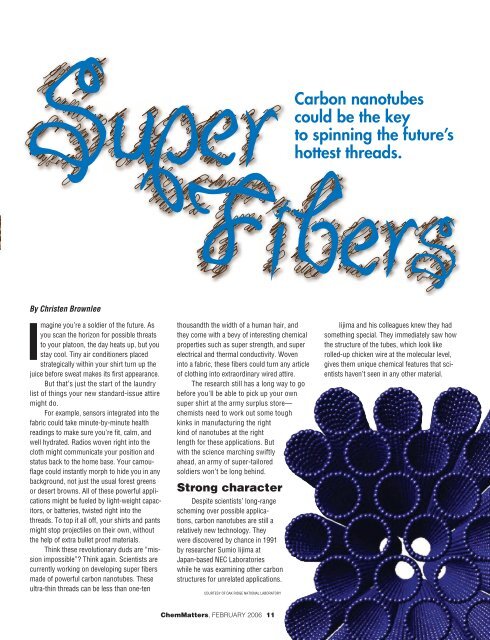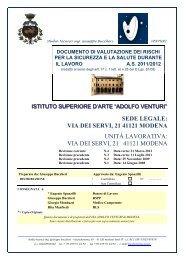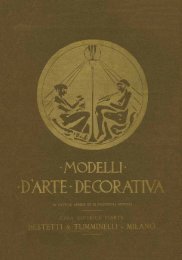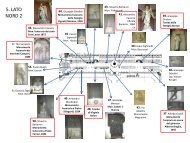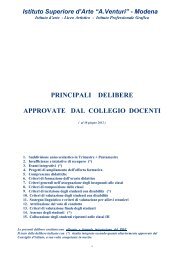Stone tablet that reports ancient repairs toSolomon’s Temple in Jerusalem.Next, Dr. Ayalon checked the patina onthe tablet. From the 18 O, he determined thattwo different calcite patinas had been used inthe inscription. The first gave 18 O valuesbetween –7.3 <strong>and</strong> –8.4 per mil 18 O, while thesecond had higher values between –0.9 <strong>and</strong>–1.7. Dr. Ayalon speculated that the patina wasconcocted by grinding a carbonate material likechalk with a carbonate that contained fossils.He suggested that the forger then dissolved themixture in hot water <strong>and</strong> spread it onto the surfaceof the inscription. Ms. Orna Cohen, anexpert conservator who specializes in identification<strong>and</strong> restoration of ancient patinas, concurredwith him that the patina was forged. Shereported that when the patina was removedfrom the inscription, it appeared freshly cut.Dr. James Harrell, professor ofArchaeological Geology at the University ofToledo, suggested that the low 18 O readingscould have come from a cleanser that was usedto clean the bone box. He pointed out that antiquitiesdealers <strong>and</strong> collectors often clean artifactsto increase value, <strong>and</strong> the patina in the inscription“looks <strong>and</strong> feels exactly like what one wouldexpect from a powdered cleanser”. Cleanserscontain ground-up limestone (CaCO 3) abrasives<strong>and</strong> baking soda (NaHCO 3), which serves as thecleansing agent. Both limestone <strong>and</strong> bakingsoda react with H 3PO 4 to produce CO 2 used in 18 O analysis. Intrigued, Dr. Harrell decided tohave an oxygen isotope analysis done on fourwidely used cleansers from Israel.The Georgia Center for Applied IsotopeStudies tested the four Israeli cleansers withinteresting results. Three of the four cleansersproduced results lower than the –4.1 to –6.7per mil 18 O range set by the Geological Surveyof Israel for authentic carbonate patina. And,the most popular cleanser had a 18 O of –8.5per mil, consistent with the patina in theinscription of the bone box. The low 18 O readings,which had convinced the Israel AntiquitiesAuthority that the bone box was forged, couldhave come from cleanser!Further doubt was raised by AndreLemaire of the Sorbonne in France. He suggestedthat the fluorine found in the inscriptionof the bone box could have resulted fromcleaning with tap water. He also suggestedthat fluorine might be present in patinas ofmany authentic antiquities, since the antiquitiesmay have been exposed to groundwatercontaining modern-day runoff.Recently, 13 C data for the bone box patinahave been released. 13 C is a comparison of13 C to 12 C isotopes in a sample <strong>and</strong> is determinedusing mass spectroscopy. Readings forthe surface patina on the bone box varied fromThe inscription on the bone box reads, “Ya’akov bar Yosef ahui d'Yeshua,” which translates “James, son of Joseph, brother of Jesus”.box had been buried in a shallow grave, thepatina would have precipitated directly fromthe groundwater water onto the surface of thebox by CO 2 degassing from the groundwater.In either case, if groundwater or seepagewater were cold, the patina would havecontained more 18 O than 16 O isotopes, givinghigher 18 O readings.Conversely, calcite patinas that formfrom hot groundwater have lower 18 O values.The very low 18 O readings obtained forthe patina found in the inscription of the bonebox suggest the patina formed from very hotwater. In fact, Dr. Ayalon reported that thewater temperature had to be between 40 <strong>and</strong>50° C. Because groundwater temperatures incaves <strong>and</strong> shallow graves in the Jerusalemarea are between 18 <strong>and</strong> 20° C, it would havebeen impossible for a patina with such a low 18 O values to have precipitated naturally.On the basis of this evidence, Dr. UziDahri, Deputy Director of the IsraelAntiquities Authority, declared that theinscription was a forgery. To further supporthis case, he reported that fluorine was foundin the patina in the same percentage as fluorineadded to tap water in Jerusalem to preventtooth decay. Since drinking water wasnot fluoridated until modern times, Dr. Dahriconcluded that the patina had been fakedusing modern-day tap water. Things werenot looking good for the bone box.The forgery case seemed airtight. TheIsraeli police arrested the owner of the bonebox, who is an antiquities dealer, on a chargeof knowingly conspiring with intent todefraud. And that's when things took a turn.Muddying the waters–1.2 to –7.7 per mil 13 C. However, unlike the 18 O results, the 13 C readings for the inscriptionpatina were almost identical to the valuesfor the surface patina, ranging from –1.1 to–7.4 per mil 13 C.Are the bone box <strong>and</strong> stone tablet fakes?If they are, they could expose a forgery conspiracythat has been operating for years. Infact, the Israel Antiquities Authority has warnedthat many forgeries from this conspiracy couldbe in museums in Israel <strong>and</strong> around the world.The forgery trial was scheduled to begin onSeptember 4, 2005. But, even if the defendantsare found not guilty or the case is dismissed,doubt will linger about the authenticity of thetablet <strong>and</strong> bone box. Scientists will continue todisagree about analyses <strong>and</strong> interpretations ofresults. Methods to test antiquities willimprove, <strong>and</strong> it is likely that new examinationswill be undertaken.More importantly, even if one day theinscription on the bone box were to be provenauthentic, the names James, Joseph, <strong>and</strong>Jesus were common in the 1st century AD, sothe inscription could refer to a family otherthan the biblical one. You can follow the ongoingcontroversy on the bone box by clicking onthe “Update” section at www.bib-arch.org.Lois Fruen teaches chemistry at the Breck Schoolin Minneapolis, MN. Her most recent article “LiquidCrystal Displays” appeared in the October 2005issue of ChemMatters.10 ChemMatters, FEBRUARY 2006 http://chemistry.org/education/chemmatters.html
Carbon nanotubescould be the keyto spinning the future’shottest threads.By Christen BrownleeImagine you’re a soldier of the future. Asyou scan the horizon for possible threatsto your platoon, the day heats up, but youstay cool. Tiny air conditioners placedstrategically within your shirt turn up thejuice before sweat makes its first appearance.But that’s just the start of the laundrylist of things your new st<strong>and</strong>ard-issue attiremight do.For example, sensors integrated into thefabric could take minute-by-minute healthreadings to make sure you’re fit, calm, <strong>and</strong>well hydrated. Radios woven right into thecloth might communicate your position <strong>and</strong>status back to the home base. Your camouflagecould instantly morph to hide you in anybackground, not just the usual forest greensor desert browns. All of these powerful applicationsmight be fueled by light-weight capacitors,or batteries, twisted right into thethreads. To top it all off, your shirts <strong>and</strong> pantsmight stop projectiles on their own, withoutthe help of extra bullet proof materials.Think these revolutionary duds are “missionimpossible”? Think again. Scientists arecurrently working on developing super fibersmade of powerful carbon nanotubes. Theseultra-thin threads can be less than one-tenthous<strong>and</strong>th the width of a human hair, <strong>and</strong>they come with a bevy of interesting chemicalproperties such as super strength, <strong>and</strong> superelectrical <strong>and</strong> thermal conductivity. Woveninto a fabric, these fibers could turn any articleof clothing into extraordinary wired attire.The research still has a long way to gobefore you'll be able to pick up your ownsuper shirt at the army surplus store—chemists need to work out some toughkinks in manufacturing the rightkind of nanotubes at the rightlength for these applications. Butwith the science marching swiftlyahead, an army of super-tailoredsoldiers won’t be long behind.Strong characterDespite scientists’ long-rangescheming over possible applications,carbon nanotubes are still arelatively new technology. Theywere discovered by chance in 1991by researcher Sumio Iijima atJapan-based NEC Laboratorieswhile he was examining other carbonstructures for unrelated applications.COURTESY OF OAK RIDGE NATIONAL LABORATORYIijima <strong>and</strong> his colleagues knew they hadsomething special. They immediately saw howthe structure of the tubes, which look likerolled-up chicken wire at the molecular level,gives them unique chemical features that scientistshaven’t seen in any other material.ChemMatters, FEBRUARY 2006 11


